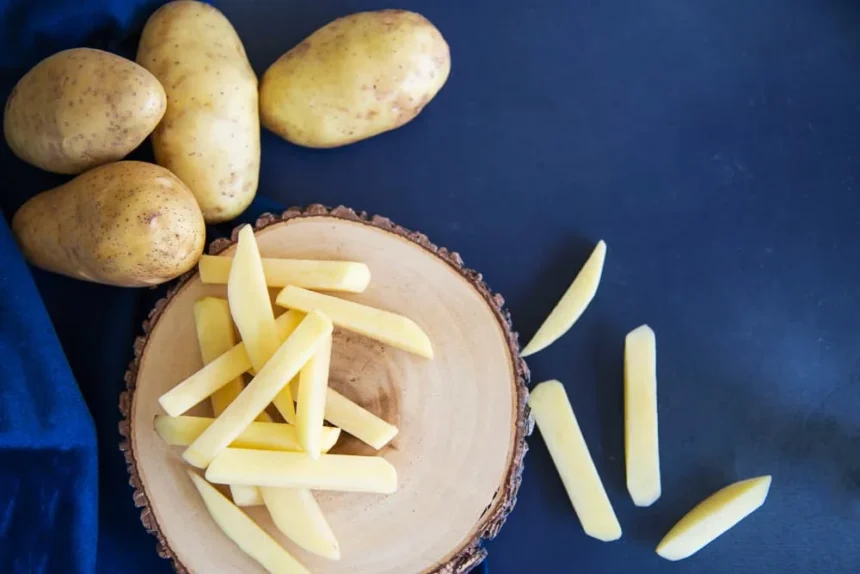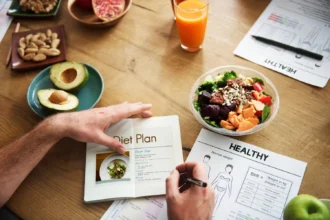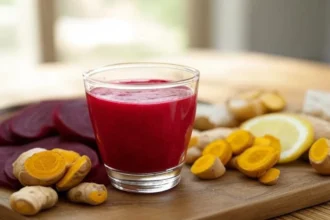Potatoes are one of the most widely consumed staple foods in the world. Whether baked, mashed, boiled, or fried, they are found in countless dishes. Potatoes come in various types, including white, red, yellow, and even purple, each offering a unique taste and texture.
Beyond being a versatile ingredient, potatoes are rich in essential nutrients. They are a good source of fiber, carbohydrates, and vitamins such as vitamin C and B6, along with minerals like potassium and manganese. However, the calorie of potato varies depending on its preparation method, making it important to understand how cooking impacts its nutritional value.
In this guide, we’ll explore calories in potatoes, calories in one potato based on size and type, and how to enjoy them in a balanced diet.
Potato Nutrition Facts
Potatoes are often misunderstood in terms of health benefits. While they do contain carbohydrates, they also offer valuable vitamins and minerals that contribute to overall well-being.
Nutritional Breakdown (per 100g, Boiled Potato)
| Nutrient | Amount | Key Benefits |
|---|---|---|
| Calories | 80–90 kcal | Provides energy |
| Carbohydrates | 18–20g | Fuels the body |
| Protein | 2–3g | Supports muscle health |
| Fat | <1g | Naturally low in fat |
| Fiber | 1.5–2.5g | Aids digestion (higher with skin on) |
| Vitamin C | 10–15% DV | Boosts immunity, antioxidant properties |
| Vitamin B6 | 20–25% DV | Supports brain function and metabolism |
| Potassium | 10–15% DV | Helps regulate blood pressure |
| Manganese | 6–10% DV | Supports bone health and metabolism |
| Other Nutrients | Folate, Niacin, Magnesium, Iron | Contribute to overall health |
💡 Tip: Keeping the skin on increases fiber content and helps retain more nutrients.
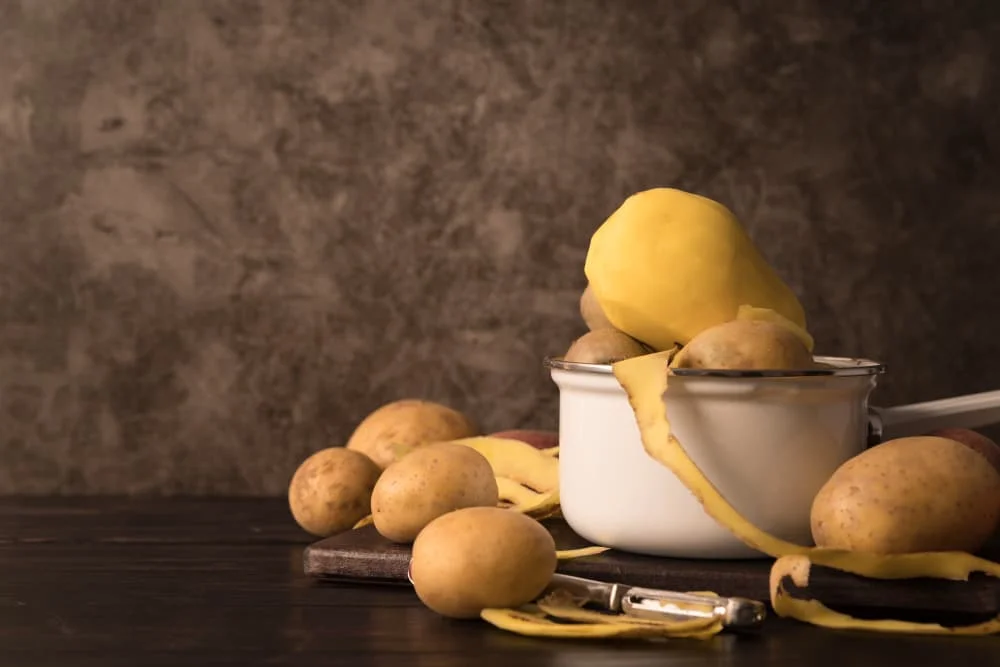
Calories in Potatoes (By Cooking Method & Size)
The calorie of potato is largely affected by its cooking method and size. Below is a breakdown of how different preparations impact its calorie count.
Calories by Cooking Method (per 100g)
| Cooking Method | Calories |
|---|---|
| Raw | 70-80 kcal |
| Boiled | 80-90 kcal |
| Baked | 90-100 kcal |
| Mashed (with milk & butter) | 100-120 kcal |
| French Fries | 250-350 kcal |
Calories in One Potato (By Size)
| Potato Size | Calories |
|---|---|
| Small (1.5″–2.25″ diameter) | ~70–100 kcal |
| Medium (2.25″–3.25″ diameter) | ~130–160 kcal |
| Large (3″–4.25″ diameter) | ~250–300+ kcal |
Baked vs. Boiled Potatoes
| Type | Calories (per 173g/medium potato) |
|---|---|
| Baked Potato | 160-180 kcal |
| Boiled Potato | 140-150 kcal |
💡 Toppings significantly increase the calorie count!
- Plain baked potato → ~160-180 kcal
- With 1 tbsp butter → +100 kcal
- With 1 tbsp sour cream → +30 kcal
- With cheese & bacon → +200+ kcal
For a healthier option, try Greek yogurt, salsa, or steamed vegetables instead of high-calorie toppings.
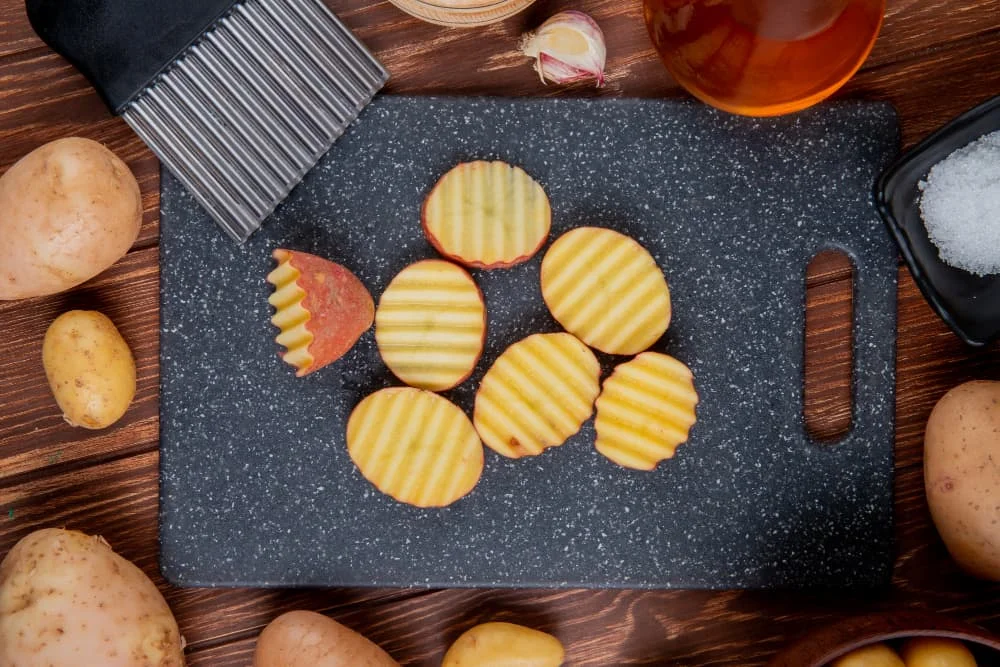
White Potatoes vs. Sweet Potatoes: Which Is Healthier?
Both white potatoes and sweet potatoes have unique nutritional benefits, but the calories in potatoes can vary based on type.
Nutritional Comparison (per 100g, Boiled vs. Baked)
| Nutrient | White Potato (Boiled) | Sweet Potato (Baked) | Key Differences |
|---|---|---|---|
| Calories | 80-90 kcal | 85-95 kcal | Similar calorie content |
| Carbohydrates | 18-20g | 20-22g | Slightly higher in sweet potatoes |
| Protein | 2-3g | 1.5-2.5g | Regular potatoes have more |
| Fat | <1g | <1g | Both are naturally low in fat |
| Fiber | 1.5-2.5g | 3-4g | Sweet potatoes provide more fiber |
| Vitamin A | Negligible | Very High (100%+ DV) | Sweet potatoes are a top source of vitamin A |
| Vitamin C | 10-15% DV | 2-5% DV | Potatoes have more vitamin C |
| Potassium | 10-15% DV | 10-15% DV | Both are great potassium sources |
| Manganese | 6-10% DV | 25-30% DV | Sweet potatoes have more |
| Vitamin B6 | 20-25% DV | 10-15% DV | Regular potatoes have more B6 |
Which One Should You Choose?
✅ Pick sweet potatoes for higher fiber and vitamin A.
✅ Go for regular potatoes if you need more vitamin C and B6.
✅ Both can be part of a healthy diet!
🔥 Healthier Option: Instead of deep-frying, bake or air-fry potatoes to reduce the calorie of potato intake.
Are Potatoes Healthy? The Good & The Bad
Potatoes often get a mixed reputation—some consider them a nutritious staple, while others associate them with weight gain and high carbohydrates. The truth is, potatoes can be a healthy part of your diet, but it all comes down to how you prepare and consume them.
Let’s break down the pros and cons to help you understand whether potatoes are good for you and how to enjoy them without the guilt.
✅ Health Benefits of Potatoes
✔ Rich in Nutrients – Provides fiber, vitamin C, and potassium.
✔ Supports Heart Health – Potassium helps regulate blood pressure.
✔ Boosts Energy – Carbs provide long-lasting energy.
✔ Aids Digestion – Fiber helps maintain gut health.
✔ Naturally Low in Fat – Healthy when cooked correctly.
❌ Things to Watch Out For
❗ High Glycemic Index (GI): Can spike blood sugar levels, especially when eaten in large amounts.
❗ Fried Potatoes = High Calories: French fries and chips are calorie-dense due to added oil.
❗ Toppings Matter: Butter, sour cream, and cheese significantly increase the calorie count.
Best Ways to Eat Potatoes Without Extra Calories
If you want to enjoy potatoes without excess calories, the cooking method and portion size make all the difference. Here’s how you can maximize their health benefits while keeping your meals nutrient-dense and lower in calories.
✔ Boil or steam instead of frying to retain the most nutrients.
✔ Bake with the skin on to boost fiber intake and slow digestion.
✔ Limit Portions: Stick to one medium potato per meal to avoid excessive carb intake.
✔ Pair with Protein: Combine potatoes with lean meats, eggs, or plant-based proteins to balance your meal.
Healthy Potato Recipe Ideas
Looking for delicious ways to eat potatoes without adding extra calories? Try these simple, healthier alternatives:
🥔 Oven-Baked Wedges – Toss with olive oil, season with herbs and spices, and bake until crispy.
🥔 Mashed Potatoes with Cauliflower – A lower-carb alternative that adds fiber and a creamy texture.
🥔 Potato Salad Alternative – Use boiled potatoes with Greek yogurt or vinaigrette instead of mayonnaise for a lighter version.
By choosing the right preparation methods, you can enjoy potatoes as part of a balanced diet without the caloric overload. 🚀

